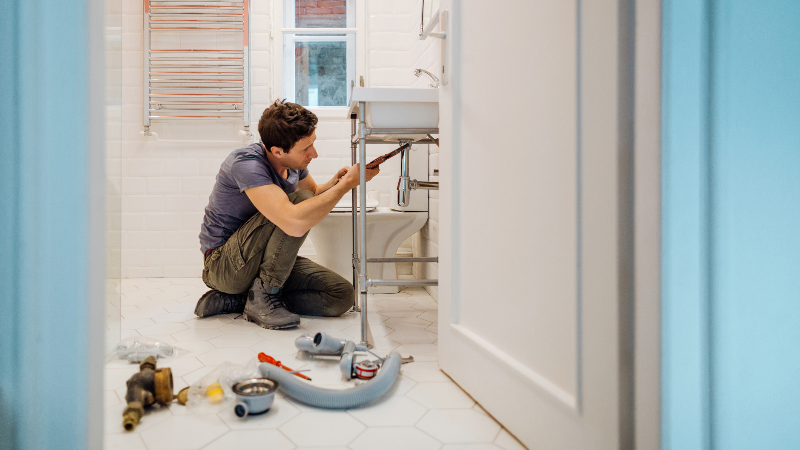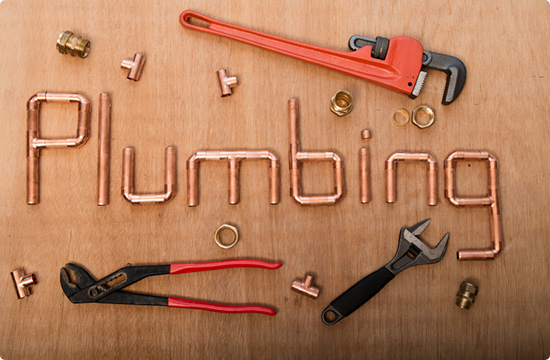Listed here in the next paragraph you can get lots of worthwhile information and facts in relation to How To Fix Noisy Pipes.

To detect loud plumbing, it is essential to determine initial whether the unwanted sounds occur on the system's inlet side-in various other words, when water is turned on-or on the drainpipe side. Sounds on the inlet side have actually differed reasons: too much water stress, used valve as well as faucet components, improperly linked pumps or various other devices, incorrectly placed pipe bolts, and also plumbing runs having too many tight bends or other limitations. Sounds on the drainpipe side typically originate from bad area or, as with some inlet side sound, a format having limited bends.
Hissing
Hissing noise that takes place when a tap is opened slightly normally signals excessive water stress. Consult your local public utility if you think this trouble; it will certainly have the ability to tell you the water stress in your location and can set up a pressurereducing valve on the inbound water system pipe if essential.
Thudding
Thudding noise, often accompanied by trembling pipes, when a faucet or device shutoff is shut off is a condition called water hammer. The noise and also vibration are brought on by the reverberating wave of pressure in the water, which instantly has no place to go. Sometimes opening up a valve that releases water rapidly right into an area of piping containing a constraint, elbow, or tee installation can generate the exact same condition.
Water hammer can usually be healed by setting up fittings called air chambers or shock absorbers in the plumbing to which the trouble shutoffs or taps are linked. These devices permit the shock wave developed by the halted flow of water to dissipate in the air they contain, which (unlike water) is compressible.
Older plumbing systems may have brief upright sections of capped pipeline behind wall surfaces on tap competes the exact same function; these can ultimately fill with water, reducing or destroying their performance. The remedy is to drain the water system completely by shutting down the primary supply of water valve and opening up all faucets. Then open up the primary supply valve and shut the faucets one at a time, beginning with the tap nearest the valve and finishing with the one farthest away.
Babbling or Shrieking
Intense chattering or shrilling that happens when a valve or tap is turned on, which typically goes away when the fitting is opened completely, signals loose or malfunctioning inner parts. The remedy is to replace the shutoff or faucet with a brand-new one.
Pumps and devices such as washing equipments and dish washers can transfer electric motor sound to pipes if they are poorly connected. Link such things to plumbing with plastic or rubber hoses-never stiff pipe-to isolate them.
Other Inlet Side Noises
Squeaking, squealing, scraping, snapping, and also tapping normally are brought on by the expansion or tightening of pipelines, generally copper ones supplying warm water. The sounds happen as the pipelines slide against loose bolts or strike nearby home framework. You can frequently pinpoint the location of the issue if the pipelines are exposed; just adhere to the sound when the pipes are making sounds. More than likely you will find a loosened pipe hanger or an area where pipes exist so near to flooring joists or other framing pieces that they clatter versus them. Affixing foam pipeline insulation around the pipelines at the point of contact ought to treat the problem. Be sure straps and also wall mounts are secure as well as supply ample support. Where possible, pipe bolts need to be affixed to huge structural aspects such as foundation walls rather than to framing; doing so reduces the transmission of vibrations from plumbing to surfaces that can magnify as well as move them. If affixing bolts to framework is unavoidable, cover pipes with insulation or other resilient material where they get in touch with fasteners, and sandwich the ends of new fasteners between rubber washing machines when mounting them.
Dealing with plumbing runs that deal with flow-restricting limited or countless bends is a last resort that needs to be taken on just after consulting a skilled plumbing contractor. Unfortunately, this situation is fairly common in older houses that might not have actually been constructed with interior plumbing or that have actually seen a number of remodels, particularly by novices.
Drain Noise
On the drainpipe side of plumbing, the principal objectives are to get rid of surfaces that can be struck by falling or rushing water as well as to insulate pipes to have inescapable audios.
In brand-new building and construction, bath tubs, shower stalls, commodes, and also wallmounted sinks and also containers ought to be set on or against resilient underlayments to reduce the transmission of noise through them. Water-saving toilets and taps are much less loud than traditional designs; install them instead of older types even if codes in your area still allow making use of older components.
Drains that do not run up and down to the basement or that branch into horizontal pipe runs sustained at flooring joists or various other framing existing especially problematic noise troubles. Such pipelines are big enough to radiate significant vibration; they also lug substantial quantities of water, which makes the situation even worse. In brand-new building, specify cast-iron soil pipelines (the large pipes that drain toilets) if you can manage them. Their massiveness contains a lot of the noise made by water travelling through them. Likewise, avoid directing drainpipes in wall surfaces shared with rooms as well as areas where people collect. Wall surfaces containing drainpipes need to be soundproofed as was explained earlier, using double panels of sound-insulating fiber board as well as wallboard. Pipelines themselves can be wrapped with unique fiberglass insulation made for the function; such pipes have an invulnerable vinyl skin (sometimes consisting of lead). Outcomes are not always adequate.
WHY IS MY PLUMBING MAKING SO MUCH NOISE?
This noise indeed sounds like someone is banging a hammer against your pipes! It happens when a faucet is opened, allowed to run for a bit, then quickly shut — causing the rushing water to slam against the shut-off valve.
To remedy this, you’ll need to check and refill your air chamber. Air chambers are filled with — you guessed it — air and help absorb the shock of moving water (that comes to a sudden stop). Over time, these chambers can fill with water, making them less effective.
You’ll want to turn off your home’s water supply, then open ALL faucets (from the bathroom sink to outdoor hose bib) to drain your pipes. Then, turn the water back on and hopefully the noise stops! If you’re still hearing the sound, give us a call to examine further.
Whistles
Whistling sounds can be frustrating, as sometimes the source isn’t easily identified. However, if you can pinpoint which faucet or valve that may be the cause, you’ll likely encounter a worn gasket or washer — an easy fix if you replace the worn parts!Whistling sounds from elsewhere can mean a number of things — from high water pressure to mineral deposits. Your best plan of attack here is to give our plumbing experts a call. We’ll be able to determine where the noise is coming from and what the cause may be, then recommend an effective fix!
Cracks or Ticks
Cracking or ticking typically comes from hot water going through cold, copper pipes. This causes the copper to expand resulting in a cracking or ticking sound. Once the pipes stop expanding, the noise should stop as well.
Pro tip: you may want to lower the temperature of your water heater to see if that helps lessen the sound, or wrapping the pipe in insulation can also help muffle the noise.
Bangs
Bangs typically come from water pressure that’s too high. To test for high water pressure, get a pressure gauge and attach it to your faucet. Water pressure should be no higher than 80 psi (pounds per square inch) and also no lower than 40 psi. If you find a number greater than 80 psi, then you’ve found your problem!
Next step is to give us a call in order to install a pressure regulator. Trust us, you don’t want to wait to resolve this issue. Not only is the sound annoying, but high water pressure can be destructive to your home — including damaging certain appliances, like your washer and dishwasher.
Dripping
You might be accustom to the slow quiet drip your kitchen faucet makes. You might have even tuned out your bathroom sink dripping and drabbing all day long — but it’s time to find its cause.
A slow drip could signify a variety of easy to fix issues, such as a worn out O ring, or loose part. And by ignoring the drip, you could be wasting up to 2,000 gallons of water a year! So start conserving water — get it looked at ASAP.
https://www.pwessig.com/blog/2018/december/why-is-my-plumbing-making-so-much-noise-/

We had been guided to that editorial about Why Do My Pipes Make Noises from a friend on a different web property. Those who appreciated our page please don't forget to pass it around. I treasure reading our article about How To Fix Noisy Pipes.
Get Estimate
Comments on “Noisy Plumbing Problems Addressed!”